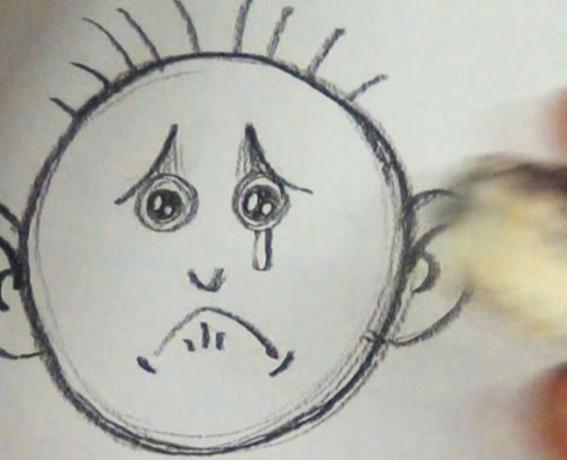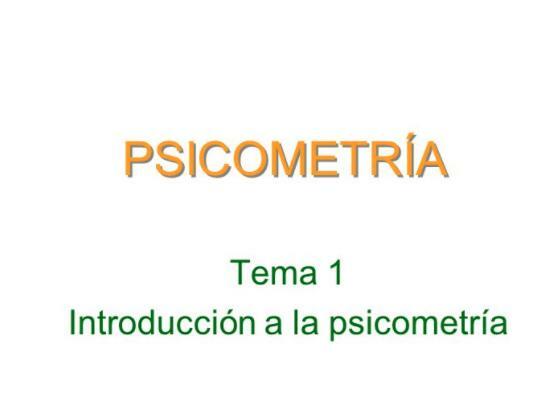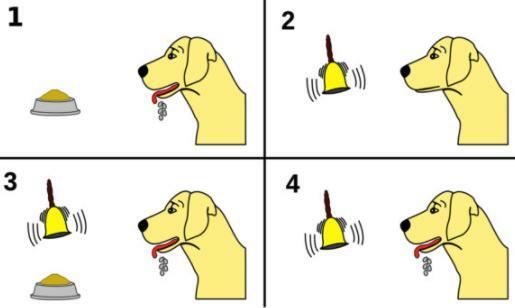
Trying to understand the origin or cause of our behaviors through or due to the influence of culture and society is made easier thanks to Vygotsky's sociocultural theory, which explains how everything cognitive is related to knowledge, which is obtained through experience. In this Psychology-Online article, it will be explained how it is that through the knowledge obtained from experience we can adapt and understand reality.
Index
- Vygotsky's theory of language
- Vygotsky's sociocultural theory: summary
- Vygotsky and constructivism
- Vygotsky's sociocultural theory of cognitive development
- Vygotsky's sociocultural theory: example
Vygotsky's theory of language.
Lev vygotsky in his book Thought and Language (1993), proposed the analysis of the relationships between these two psychological functions, from a theoretical perspective never addressed before. He proposes that awareness should be understood as a dynamic system of psychological functions, where thought and language are only two; These functions constitute the various forms of the activity of consciousness. The
If we consider language as an instrument that has a social origin, we mean that every activity or process mental is mediated by the use of psychological instruments, that is, symbols that facilitate or make possible the think. For this author the instruments could be: the language, works of art, writing and drawings. Reason why the use of graphic organizers in the classroom helps to develop thinking and language; as well as the organization of ideas and their structuring.
Caicedo (2012), states that the brain has been endowed through evolution with specialized areas in the processing of certain stimuli according to universal rules of language. Broca's area involved in language production and Wernicke's area associated with semantic language processes. Here you can see Broca and Wernicke's area functions. Caicedo refers that both one and the other are structures with the capacity to process not only sound stimuli, but also those that contain visual and spatial information that can be processed linguistically.
Medina (2007) refers that all mental activity is mediated by the use of psychological instruments, that is, symbols that make it possible to think, and indeed carry out activities. As is also stated by Reuven Feuerstein (2008), the cognitive mind is an organizer of the world, which are being formed and structured from an early age.
For Vygotsky the origin of the symbols is socio-cultural since these are the channel for thought, for Vygotsky symbols recreate and reorganize the mental composition. Vygotsky (2001) refers that the understanding of language is a chain of associations that arise in the mind, under the influence of known images of words. Therefore between language and thought "meaning" plays an important role.
For Vygotsky (2001) the meaning of the word is not static, but evolves with development. It is for this reason that this author proposes that the meaning of the word functions as a unit of analysis of consciousness. Meaning is the response that is produced; the evolution of our thought is foreshadowed by language, that is, by those linguistic instruments of thought and the subject's social and cultural experience.
Therefore this unit of analysis is connoted to the inter and intra psychological areas; considering what Reuven Feuerstein says about metacognition: the metacognitive component includes awareness of the factors that affect thinking and control over these factors.
Medina (2007) states that the meaning of a symbol, that is, understanding its connotation, is a task that falls to the interpreter himself. Thought is restructured and modified by transforming itself into language.
Since we were little they have taught us to talk with others "how to say hello, ask about the lives of others" but they never taught us to talk with ourselves, even though this is a very important basis of metacognition, being aware of ourselves and others, our consciousness Social. As Marco Ledesma refers (2014) thought and language continually give changes in daily lifeThey are turns that bet on communication, with the intention of expressing what one has inside, being guided by experiences and illusions. From a neurolinguistics approach, the unconscious of human beings is fundamental in subjective and intersubjective relationships. Keeping Lacan in mind, the other influences the development and formulation of language in everyday life.
Vygotsky's sociocultural theory: summary.
Lev Vygotsky, a Soviet psychologist considered the father of social constructivism, that is, that theory that the mind and its functions originate in culture and interaction with others and where learning occurs in a cultural historical context determined. These ideas were taken up by cognitivism and were the foundations of the cognitive revolution.
For Vygotsky there are different psychic functions:
- One of them are lower, that is, those that we share with the animal kingdom such as memory, attention and perception.
- Others, on the other hand, are psychic functions superior and they are the ones that characterize us as human beings, and they are the ones that we can only achieve through interaction with other human beings, for example selective attention, abstract reasoning, metacognition, insight, and thinking mathematical. All this mediated by language, which is the main human cultural tool that enables us to think and communicate.
Vygotsky comes to differentiate two levels of development:
- The level of current development of the infant (everything that a person can do without problems or help)
- The level of potential development (everything the child could achieve or do). The distance between current development and potential development is the zone of proximal development, it is this zone in which the Infant receives help and collaboration from the adult, an expert or a classmate more advanced than him to achieve the learning.
In Vygotsky's theory, the human potential or cognitive capacity of the human being is discussed, where it is stated that each generation should not start over. from scratch, it is not necessary to reinvent the wheel or the fire, each generation can start from the knowledge that the generation has already developed previous. Adults and experts can exercise this loan of consciousness that they have achieved through development and learning. In this way we increase our potential.
Vigotsky and constructivism.
What makes Vygotsky's thinking characteristic according to Medina (2007) are the following three points:
- Semiotics.
- The social genesis of consciousness.
- The role of the symbolic instrument as a regulator of cognitive activity.
Through this thought there is the development of man and the behavioral explanation of him with his practice since the constructivist processes are typical of the mental functions where the assimilation of cultural knowledge.
Vygotsky's sociocultural theory of cognitive development.
Vygotsky tries to answer the question: how does the child learn?
Learning according to Vygotsky
For Vygotsky, learning means acquiring higher cognitive functions. How does the child acquire these functions? Interacting with the environment that surrounds him, but not only this, but the child, interact with the environment around you through a number of tools.
- For example: a magnifying glass, with this magnifying glass you approach a tree and observe it.
In this way he is interacting with his environment but is making use of a tool that facilitates interaction with the environment. It is for this reason that Vygotsky calls his learning also mediated learning, because the tools that mediate between the child and the environment are generally of a social or cultural nature: people or instruments used by the elderly.
Sociocultural learning
For Vygotsky culture influences people's cognitive development. As Savater (1997) refers to, the community in which the child is born implies that he will be forced to learn and also the peculiarities of that learning. Savater continues explaining with the article The Super Organic by Alfred L. kroeber "The distinction that counts between the animal and the man is not the one between the physical and the mental, which is only of relative degree, but the one between the organic and the social." Bach, born in the Congo rather than in Saxony, had not produced even the slightest fragment of a chorale or a sonata, although we can trust that he would have surpassed his countrymen in some other way music.
How do these structures of thought and structures of action develop? For Vygotsky through social activities; he puts emphasis on social for development.
Vygotsky also talks about basic cognitive skills, which are those that develop when we interact with a group, society or our culture. The cognitive skills and strategies that a person will develop are different, that is why you cannot extrapolate the culture and skills of India, China, the United States or any other country.
These basic cognitive skills are attention, memory and language, perception and they are transformed through of the influence of culture and society on higher thinking functions in order to solve more problems complex.
Vygotsky tells us about the proximal development zoneThere is what the child can do on his own and what he cannot do on his own. For this the author says that parents must guide, direct their learning and this is known as scaffolding (it is the support of the adult so that she can guide the child's learning until she reaches autonomy in the specific activity or can solve the problem on her own only). It is what the teacher does with someone he teaches to play guitar, he is doing a scaffolding for the child to generate autonomy.
The more interactions you develop, the more structures and forms of behavior you will develop but you cannot extrapolate to all cultures (a child from Africa will have different cognitive and thinking strategies from a child American).
Vygotsky does very important work as he emphasizes that learning and development cognitive is achieved through social interaction and that not only can be intelligent by have a high IQ rather, people who have great capacities have different intelligences and have a higher cognitive development.
He tells us that this way of thinking and acting is a tool for the person to solve different types of problems. An infant who has less education in an environment less rich in stimuli and that help her personal and educational growth will have fewer tools than an infant who does. has a large amount of education, therefore this child who has fewer tools can solve fewer problems than the one who has a better environment that enriches his development cognitive.
Vygotsky's sociocultural theory: example.
A child who walks, approaches a tree and observes that in one of the branches there is a fruit that he wants to take with him, but still he does not have enough skills to reach it (such as climbing the tree or whatever else he needs to climb). The I usually where the child can function without the need for help would be called actual development level. Later a adult helping child to climb the trunk to reach the fruit (he will not climb the trunk and take the fruit, but help him). With the help of the adult the child will reach a point on the tree trunk which would be the potential development level, that is to say, it is the point to which the child can access with the help of the adult and that beyond it he could not take any action even with the help of adults. The adult would be the scaffold, which would constitute the proximal development zone.
This article is merely informative, in Psychology-Online we do not have the power to make a diagnosis or recommend a treatment. We invite you to go to a psychologist to treat your particular case.
If you want to read more articles similar to Vygotsky's sociocultural theory, we recommend that you enter our category of Basic psychology.
References
- Lev Vygotsky. (1993). Thought and language. Editorial Paidos. Spain.
- Caicedo, H. (2012). Neurolearning. Editions of the U. Bogota
- Medina, A. (2007). Thought and Language. Constructivist approaches. Editorial Mc Graw Hill Interamericana. Mexico DF.
- Reuven Feuerstein. (2008). Theory of cognitive structural modifiability. UNMSM. Peru.
- Oscar Wilde. (1905). Of profundis. Editorial Siruela. Madrid.
- Vygotsky. (2001). Pedagogical Psychology. AIQUE. Buenos Aires.
- Marco Ledesma A. (2014). Analysis of the theory of: Vygotsky for the reconstruction of social intelligence. EDUNICA. Ecuador.
- Fernano Savater. (1997). The value of educating. Ariel. Spain.


